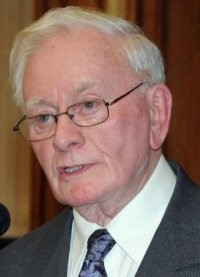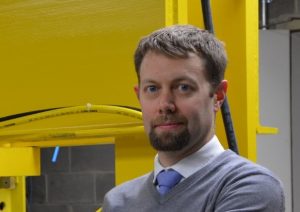Keynote Speakers
Sunday, 17 June
10th Annual MTS Lecture
Reliability-based hazard analysis and risk assessment for rock slopes
Sebnem Düzgün, Professor and Banfield Chair, Mining Engineering, PhD, Middle East Technical University
 Quantification of risks due to failure of natural and engineered rock slopes is essential for supporting objective decision-making in rock engineering. Although risk assessment is well-developed in structural engineering, its adoption in rock engineering still involves various challenges. These challenges involve modeling and quantification of uncertainties, implementation of analytical and numerical approaches in probabilistic modeling frameworks for hazard assessment, prediction of losses in relation to potential instability, and evaluation of the assessed risk in terms of established acceptability/tolerability criteria. Such challenges also impact the development of engineering standards and, hence, engineering practice. This talk will provide an overview of probabilistic approaches for rock slope stability analysis with emphasis on the first-order reliability method (FORM) in hazard assessment. Various case study examples will be discussed for the adoption of FROM in numerical and analytical frameworks. The methods for quantification of uncertainties will be explained. Then, quantitative prediction of losses due to rock slope instabilities and associated risk assessment approaches will be outlined considering acceptability and tolerability criteria. Demonstration of implications related to the risk assessment concepts will be performed by using case studies from large natural slopes. Finally, the talk will highlight future research directions and necessary standardization and adaptation strategies in rock engineering practice.
Quantification of risks due to failure of natural and engineered rock slopes is essential for supporting objective decision-making in rock engineering. Although risk assessment is well-developed in structural engineering, its adoption in rock engineering still involves various challenges. These challenges involve modeling and quantification of uncertainties, implementation of analytical and numerical approaches in probabilistic modeling frameworks for hazard assessment, prediction of losses in relation to potential instability, and evaluation of the assessed risk in terms of established acceptability/tolerability criteria. Such challenges also impact the development of engineering standards and, hence, engineering practice. This talk will provide an overview of probabilistic approaches for rock slope stability analysis with emphasis on the first-order reliability method (FORM) in hazard assessment. Various case study examples will be discussed for the adoption of FROM in numerical and analytical frameworks. The methods for quantification of uncertainties will be explained. Then, quantitative prediction of losses due to rock slope instabilities and associated risk assessment approaches will be outlined considering acceptability and tolerability criteria. Demonstration of implications related to the risk assessment concepts will be performed by using case studies from large natural slopes. Finally, the talk will highlight future research directions and necessary standardization and adaptation strategies in rock engineering practice.
To read biographical sketch, CLICK HERE
Monday, 18 June
Keynote Address
Rock Mechanics Aspects of the John Hart Generating Replacement Project
Tony Dell, Engineering Specialist-Geotechnical, SNC Lavalin
 This presentation will discuss several rock mechanics aspects of the design and construction of the John Hart Generating Station Replacement Project. The project provides for the replacement of the furthest downstream station in the Strathcona-Ladore-John Hart cascading hydroelectric development on the Campbell River on Vancouver Island in British Columbia. The John Hart facility has been in operation since 1947 and is being replaced for a number of reasons, including age related deterioration. The current project will provide an underground power house and gate chamber with headrace and tailrace tunnels, service tunnels and construction adits, and two shafts–one as the inlet to the headrace tunnel and the other to cater for the upstream surge.
This presentation will discuss several rock mechanics aspects of the design and construction of the John Hart Generating Station Replacement Project. The project provides for the replacement of the furthest downstream station in the Strathcona-Ladore-John Hart cascading hydroelectric development on the Campbell River on Vancouver Island in British Columbia. The John Hart facility has been in operation since 1947 and is being replaced for a number of reasons, including age related deterioration. The current project will provide an underground power house and gate chamber with headrace and tailrace tunnels, service tunnels and construction adits, and two shafts–one as the inlet to the headrace tunnel and the other to cater for the upstream surge.
The rock mechanics issues discussed will include:
- The investigations carried out prior to and during construction;
- The geological and rock mechanics properties of the intact rock and rock mass;
- The analysis and design of the coffer dam behind the existing concrete dam using 900 mm dia. pipe piles socketed into the rock;
- The stress/strain analyses for the tunnel under the existing concrete dam. This includes the provision of temporary support to cater for the 1:2,500 AEF earthquake and permanent support for the 1:10,000 AEF earthquake of the combined dam block, intake and tunnel system;
- The limit equilibrium and stress analyses for design of the shotcrete and rockbolt support for the 93 m long, 23 m wide and 40 m deep underground power house;
- The 3D stress analyses of the interaction between the tunnel, the powerhouse and the gate chamber. This includes the seepage analyses and the calculation of hydraulic fracture, which decided the location of the powerhouse and the distance of the power tunnel from the powerhouse;
- The seepage analyses for the pressurized power tunnel that passes under a 40 high earthfill dam to ensure that the increased seepage pressures do not affect the stability of the existing earthfill dam;
- Discussion of several of the construction activities; and
- The investigation of an alternative route for the main access adit after a buried channel, containing sand and gravel was encountered during construction. This will include a discussion of the rock stresses in the narrow rock pillar between the access tunnel and the gate chamber.
To read biographical sketch, CLICK HERE
Monday, 18 June
Early Career Keynote Address
Hydraulic Fracturing in Naturally Fractured Reservoirs: Aspects from Multi-Scale Numerical Modeling
Fengshou (Frank) Zhang, Professor, Tongji University
 Naturally fractured reservoir rock in-situ is one of the most complex geomaterials. Uncertainties such as material inhomogeneity and discontinuities at various length scales make the propagation of hydraulic fracture in such a medium “enigmatic”. Advanced numerical modeling provides a powerful tool to analyze the complex fracturing process, assess the extent of various uncertainties and provide advice to practical fracturing designs. This talk aims to give a comprehensive review of multi-scale numerical modeling of hydraulic fracturing in naturally fractured reservoir based on distinct element method, particle flow codes, lattice method and finite difference method. Some key aspects of unconventional hydraulic fracturing, such as near wellbore fracture initiation, hydraulic fracture/natural fracture interaction, complex fracturing and microseismic geomechanics, refracturing and in-fill well fracturing, injection induced seismicity and fault activation, hydraulic fracturing in unconsolidated rocks, will be covered and discussed.
Naturally fractured reservoir rock in-situ is one of the most complex geomaterials. Uncertainties such as material inhomogeneity and discontinuities at various length scales make the propagation of hydraulic fracture in such a medium “enigmatic”. Advanced numerical modeling provides a powerful tool to analyze the complex fracturing process, assess the extent of various uncertainties and provide advice to practical fracturing designs. This talk aims to give a comprehensive review of multi-scale numerical modeling of hydraulic fracturing in naturally fractured reservoir based on distinct element method, particle flow codes, lattice method and finite difference method. Some key aspects of unconventional hydraulic fracturing, such as near wellbore fracture initiation, hydraulic fracture/natural fracture interaction, complex fracturing and microseismic geomechanics, refracturing and in-fill well fracturing, injection induced seismicity and fault activation, hydraulic fracturing in unconsolidated rocks, will be covered and discussed.
To read biographical sketch, CLICK HERE
Tuesday, 19 June
ARMA Distinguished Lecture
Rock Engineering – Where is the Laboratory?
Charles Fairhurst, Professor Emeritus, University of Minnesota
 The International Society for Rock Mechanics (ISRM) was established by Dr. Leopold Müller in 1962 to emphasize that rock mechanics was distinct from soil mechanics. Soil could be considered as a plastic continuum; its isotropic constitutive behavior could be determined in classical “bench scale” laboratory tests.
The International Society for Rock Mechanics (ISRM) was established by Dr. Leopold Müller in 1962 to emphasize that rock mechanics was distinct from soil mechanics. Soil could be considered as a plastic continuum; its isotropic constitutive behavior could be determined in classical “bench scale” laboratory tests.
Although not stated explicitly, the term “rock”, as used by Dr. Müller, referred to rock in situ on a scale large enough to include major discontinuities, usually aligned in several sets of orientations. Such large-scale features are a primary factor in rock engineering. Their constitutive behavior cannot be determined in a classical laboratory. This concern for engineering was underlined by the recent decision of ISRM to change its name to the International Society for Rock Mechanics and Rock Engineering, although retaining the acronym ISRM.
How can the influence of large-scale discontinuities be addressed in rock engineering? This presentation will examine several options that have been used and will offer suggestions.
Rock mechanics/engineering is a central component of sub-surface earth resources engineering, relevant to issues of major national and global importance with relevance also to extra-terrestrial developments. The lecture will conclude with recommendations concerning future development of engineering–scale rock mechanics.
Wednesday, 20 June
Keynote Address
The Making of a Hydraulic Fracture Swarm
Andrew Bunger, Assistant Professor, University of Pittsburgh
 I will tell of a pursuit to identify the ingredients required for swarming behavior to occur in systems of hydraulic fractures. I will show that key missing elements have included: 1) a basic understanding of the attractive force in these systems, that is, why fluid-driven cracks would have any mechanical impetus to grow near one another in the first place, and 2) a model capable of predicting conditions in which subsequent hydraulic fractures can initiate even when fluid pressure is limited by flow in previously-initiated hydraulic fractures. A combination of theory, laboratory experiments, and numerical simulation show that the ability to initiate and sustain propagation of multiple hydraulic fractures stems from the dependence of these key ingredients on geometry, the relative importance of viscous energy dissipation in the context of the energy balance of the system, and time-dependent failure of rocks rooted in subcritical crack growth. Finally, looking to the future, I will discuss how this research provides a story of both success and caution, emphasizing the need to hold reductionism and complexity in tension with one another as we seek models that are more representative of observed reality while pursuing this goal in systematic manner that allows us understand what is driving the behavior generated by the models we are developing.
I will tell of a pursuit to identify the ingredients required for swarming behavior to occur in systems of hydraulic fractures. I will show that key missing elements have included: 1) a basic understanding of the attractive force in these systems, that is, why fluid-driven cracks would have any mechanical impetus to grow near one another in the first place, and 2) a model capable of predicting conditions in which subsequent hydraulic fractures can initiate even when fluid pressure is limited by flow in previously-initiated hydraulic fractures. A combination of theory, laboratory experiments, and numerical simulation show that the ability to initiate and sustain propagation of multiple hydraulic fractures stems from the dependence of these key ingredients on geometry, the relative importance of viscous energy dissipation in the context of the energy balance of the system, and time-dependent failure of rocks rooted in subcritical crack growth. Finally, looking to the future, I will discuss how this research provides a story of both success and caution, emphasizing the need to hold reductionism and complexity in tension with one another as we seek models that are more representative of observed reality while pursuing this goal in systematic manner that allows us understand what is driving the behavior generated by the models we are developing.
To read biographical sketch, CLICK HERE